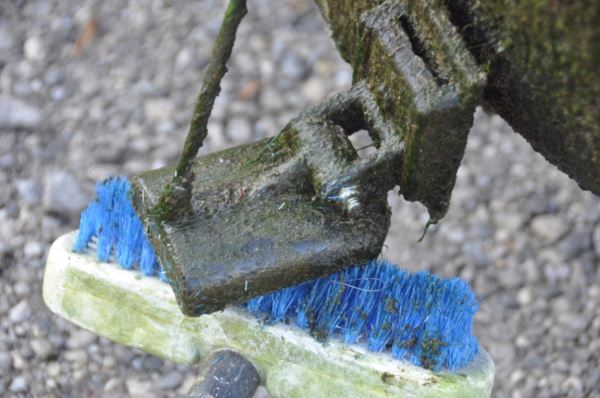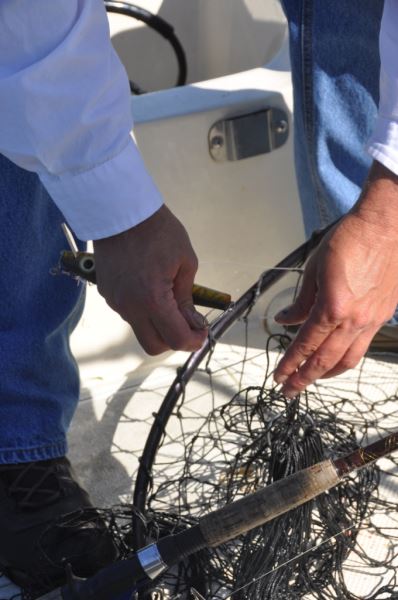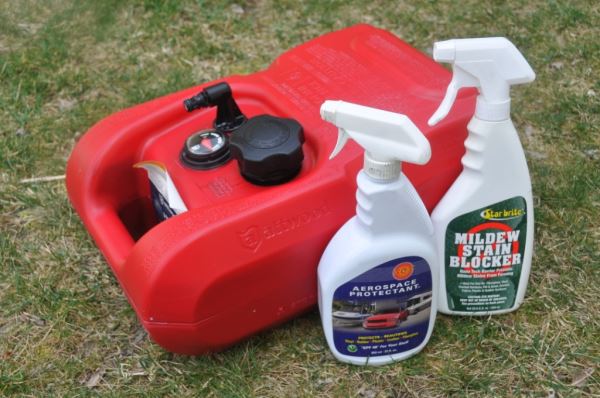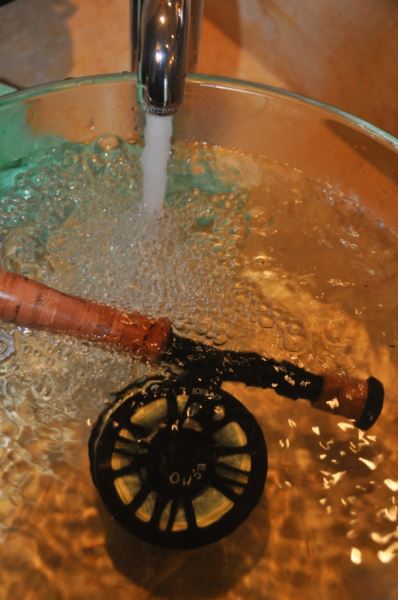
Assuming your fishing season is coming to its annual autumnal break, one of the best ways to increase your odds at fishing success next spring starts with what you do to your boat and tackle now.
Take for instance your boat’s motor. Unless you enjoy wetting a line at the dock, you can’t go fishing from your boat if the motor won’t run. And if you live anywhere there’s a threat of sub-freezing air temperatures this winter, you need to make sure there’s no water in the engine’s crank case or lower unit. That means getting your engine vertical (ie: tilted all the way down) and keeping it that way over the storage period. That orientation will allow gravity to draw all the moisture down into the lower unit, through the lubricant (water is heavier than oil), where the water can be drained via the plug placed there for the purpose before it can freeze, expand and do their damage. Top off the lower unit with fresh lube or replace it entirely and you have one less task standing between you and the fishing grounds next spring.
 While draining the lower unit, remove the engine’s propeller and check for any sign of fishing line that may have found its way and wound its way around the shaft. Fishing line, especially the new super-braids, left to spin and wear through a seal or score a shaft, creates one of the most common entry points for water to get into the motor in the first place.
While draining the lower unit, remove the engine’s propeller and check for any sign of fishing line that may have found its way and wound its way around the shaft. Fishing line, especially the new super-braids, left to spin and wear through a seal or score a shaft, creates one of the most common entry points for water to get into the motor in the first place.
I replaced my pair of six-gallon metal fuel tanks with three-gallon plastic ones last year, primarily to force me to use fresh fuel during the fishing season. I found that, depending on how and when I used it, my 9.9hp Johnson outboard could take a month or more to consume six-gallons of ethanol-“enriched” gasoline that some experts say has a shelf life of nine weeks. I enjoyed flawless engine operation all season and found that when it did come time to refill the tanks, they were much easier to carry to and from the truck and filling station than the larger six gallon containers. Those small tanks pay off now as well, for when I have some left over at the end of the season, there’s a small enough amount that I can easily pour it into the tank of my SUV so that I can start with full tanks of fresh gas next fishing season.
 For those pontoon and deck boats with built-in tanks, if they are plastic, condensation isn’t nearly as big a problem as it is with metal fuel tanks. With fluctuating air temperatures, the walls of a partially filled metal tank will condense and weep moisture into the remaining gasoline that will cause problems when it comes time to use it as engine fuel. Many experts now say that it’s better to empty plastic internal tanks for storage over the off-season and fill them with fresh gasoline when it’s time to go boating again.
For those pontoon and deck boats with built-in tanks, if they are plastic, condensation isn’t nearly as big a problem as it is with metal fuel tanks. With fluctuating air temperatures, the walls of a partially filled metal tank will condense and weep moisture into the remaining gasoline that will cause problems when it comes time to use it as engine fuel. Many experts now say that it’s better to empty plastic internal tanks for storage over the off-season and fill them with fresh gasoline when it’s time to go boating again.
Metal tanks, most advise, may be best left topped off with fuel that has been stabilized and treated to thwart the effects of ethanol.
If your boat has been docked all season and has a fish-finder, take time to clean the face of the transducer as soon as the boat is removed from the water and before the slime that accumulated on the unit has time to dry and harden. Make sure the transducer is secure to the hull and facing straight down to give the most accurate sonar readings. Check again for that face-down orientation next spring and before every launching. Check the mounting hardware on all rod holders and fish-finders now as well, and get them secure while you’re thinking about it; you don’t want that first good fish of the season ripping a rod holder out of the gunwale to remind you next spring.

Fishing tackle deserves some love come autumn too. I find that watching football games—at least those that I don’t have an emotional or monetary stake in—provide a great time to remove all the old fishing line from my reels and re-spool with new. Back off the drags on all your reels now as well, to keep the washers from assuming compressed postures full-time, and oil any moving, exterior parts of the reel.
Check your rods for lose guides or missing inserts and get them scheduled for repair or replacement over the off season—when tackle shops have more time to offer such services and you don’t have to suffer through any “down time” during the fishing season without your favorite rod or reel. Go through the tackle box and remove any leaking Gulp! containers, discard any rock-hard Powerbaits and tighten any stinky dip bait jars that threaten to permeate the box and foul the air over the winter. Separate rubber worms, grubs and skirts from lures with finishes that might be damaged by the reaction between their respective surfaces.
Finally, look at your landing net and check for holes in the webbing. The little ones are supposed to be there; the big one on the side signals it’s time to replace the netting—or give yourself a reason to kick yourself when it comes time to land that first big fish next spring.

